Variables That Affect Thermal Comfort and Its Measuring Instruments: A Systematic Review
Abstract
:1. Introduction
2. Materials and Methods
2.1. Identification of Variables Affecting Thermal Comfort
2.2. Frequency Study of LCTs in the Literature
2.3. Identification of TCV Capture Devices
3. Results and Discussion
3.1. Characterization of Articles
3.1.1. Associated Publications Metrics
3.1.2. Keyword Co-Occurrence Analysis
- The red cluster displays the terms thermal comfort, energy efficiency, naturally ventilated, and occupant behavior as those with the highest number of occurrences given their size. In addition, the energy efficiency term acts as an intermediary between the red and blue clusters. This cluster contains great variability of terms, including keywords of authors attributable to TCVs, such as relative humidity or air temperature, which represents that the articles in this cluster study thermal comfort from different research fronts, with a focus on one TCV or several variables.On the one hand, the personal attitudes of users represent a key factor to consider when predicting the overall thermal–energetic performance of buildings [20]. It has often been observed that the operational energy used is higher than that predicted in the design, and adaptive behavior driven by occupant comfort is a potential source of this discrepancy [21]. For example, in the field study by Liu J. et al. [22], it can be seen that, although there are central heating systems (radiators), occupants use heating equipment (heaters) to satisfy their thermal preferences.Thus, occupants’ comfort requirements regarding thermal conditions and indoor air quality in buildings represent a high energy expenditure. Therefore, in the challenge of reducing the environmental impact, it is important to understand occupants’ interactions with the indoor environment to provide comfort conditions in the most efficient way [20,22].In contrast, in naturally ventilated spaces, this ventilation condition could effectively decrease energy consumption. For example, Park B. and Lee S. [23] found that improving natural ventilation strategies reduced energy consumption by 30% compared to a mechanical ventilation strategy.
- In the blue group are those terms linked to machine learning models. Here, larger nodes are distinguished as the predicted mean vote (PMV) model, office buildings, machine learning and heating, ventilation, and air conditioning (HVAC) systems.Both PMV and adaptive models have limitations when used to predict occupant comfort in buildings under real conditions. Both models show poor predictive accuracy when applied to a small group of people or individuals because they are designed to predict the average comfort of a large group of people [24].On the other hand, machine learning is a subfield of artificial intelligence (AI) mainly concerned with programming computers to interpret complex data and evolve in performance with experience [11]. Thus, integrating machine learning algorithms with thermal comfort data analysis could be a very promising direction [25]. Predictions about the thermal preference of individuals can help HVAC systems to provide preventive or corrective control strategies to improve the comfort satisfaction of building occupants [26].This is evidenced by the growing number of such studies and model development using these techniques. For example, Kim J. et al. [26] developed a predictive model on the thermal preference of individuals based on six machine learning algorithms.Now, regarding the input parameters, different studies may vary for the development of these algorithms. However, most of them used common comfort attributes such as the same environmental and personal factors incorporated in the PMV model [25].
- The yellow color shows the cluster associated with those terms associated with the evaluations and field studies in the operational stage, evaluating based on standardized guidelines. Thus, the terms with the highest occurrence correspond to indoor environment quality (IEQ), comfort standards, and post-occupancy evaluation.IEQ refers to the quality of indoor spaces concerning the health and wellbeing of users. It is a concept that considers several components of overall indoor comfort: thermal, lighting, air quality, and acoustic [27]. Improving workplace comfort levels positively affects several domains, affecting wellbeing, productivity, energy efficiency, and related economic benefits. However, these areas may conflict each other, so managing a building during the operation phase must take all these into account to balance the weight of each aspect [28].At present, there are different standards to follow regarding the quality of the environment. There are standards for its evaluation and measurements regarding thermal comforts, such as ASHRAE and ISO7730. On the other hand, if we talk about air quality, CO2 concentration as the main variable can increase in indoor environments due to the combination of human respiration and insufficient ventilation. This is linked to thermal comfort due to the action of doors and windows. Thus, the WELL Building Standard certification recommends a certain threshold of parts per million of CO2 concentration to avoid falling into the “sick building syndrome” [29,30].
- In green color, it is possible to observe the terms adaptive model, thermal adaptation, comfortable temperature, and children’s perception. Thus, it is possible to observe that the research front of these studies is to evaluate the behavior and perception caused by thermal comfort levels in occupants.According to the adaptive approach, if a user is in a state of discomfort, they will restore their state of wellbeing [31]. Psychological adaptation has been considered the most important factor in explaining discrepancies in observed and predicted thermal sensations and acceptability [22]. People’s responses are highly dependent on their thermal experiences [32].
3.2. Variables Affecting Thermal Comfort
3.2.1. TCV Classification
3.2.2. Frequency of Variables in the Literature
3.3. Capture Devices
4. Discussion
4.1. Practical Considerations
- Contextual variables and those associated with occupant behavior can contribute to early design stages. For example, recognizing preferences for air-conditioned or naturally ventilated environments based on the climatic context and determining the habit of closing windows, it is possible to improve the architectural design to meet these preferences [28]. Thus, stakeholders such as real estate companies should consider these aspects to improve thermal comfort in operational stages;
- In terms of energy and health, the adaptive actions taken by users in their thermal environments affect energy consumption through the use of heating/cooling systems and generated CO2 levels, respectively. In this way, the search is developed to establish a synergy between the factors of a design that meets people’s expectations while complying with a sustainable approach.
4.2. Limitations
- Although the impact that each of the variables obtained referring to user behavior can have on thermal comfort is analyzed, there is no emphasis on which causes the greatest impact or which are essential, so the question of which could have the greatest influence at times of gaps in the values of thermal comfort evaluations is not presented;
- Since this review is attributable to three types of infrastructures, i.e., residences, educational establishments, and offices, it is not attributable to other infrastructures such as hospitals, subways, etc. However, many evaluations are focused on these interior spaces since they represent daily scenarios where people spend most of their time. Hence, the conclusions generated from this review manage to cover a large part of potential users;
- This review was carried out for an operational stage, so other variables focused on design, such as material insulation, were not considered. However, the spectrum of variables seen helps to understand users’ perceptions and can provide important considerations to be included in the design stages of a building.
5. Conclusions
Author Contributions
Funding
Institutional Review Board Statement
Informed Consent Statement
Data Availability Statement
Acknowledgments
Conflicts of Interest
References
- Lan, X.; Cao, J.; Lv, G.; Zhou, L. Simulation method for indoor airflow based on the Industry Foundation Classes model. J. Build. Eng. 2021, 39, 102251. [Google Scholar] [CrossRef]
- Molina, C.; Veas, L. Evaluación del confort térmico en recintos de 10 edificios públicos de Chile en invierno. Rev. Constr. 2012, 11, 27–38. [Google Scholar] [CrossRef]
- Arballo, B.; Kuchen, E.; Alamino, Y.; Frank, A.A. Evaluación de Modelos de Confort Térmico Para Interiores. 2016. Available online: https://www.researchgate.net/publication/309477141 (accessed on 13 September 2021).
- Vischer, J.C. The effects of the physical environment on job performance: Towards a theoretical model of workspace stress. Stress Health 2007, 23, 175–184. [Google Scholar] [CrossRef]
- Alzahrani, H.; Arif, M.; Kaushik, A.; Goulding, J.; Heesom, D. Evaluating the effects of thermal comfort on teacher performance using Artificial Neural Network. Int. J. Build. Pathol. Adapt. 2018, 39, 20–32. [Google Scholar] [CrossRef]
- Ekici, C. A Review of Thermal Comfort and Method of Using Fanger’s PMV Equation. 2013. Available online: https://www.researchgate.net/publication/289201295 (accessed on 15 September 2021).
- Volkov, A.A.; Sedov, A.V.; Chelyshkov, P.D. Modelling the thermal comfort of internal building spaces in social buildings. Procedia Eng. 2014, 91, 362–367. [Google Scholar] [CrossRef] [Green Version]
- Zhou, Y.; Su, Y.; Xu, Z.; Wang, X.; Wu, J.; Guan, X. A hybrid physics-based/data-driven model for personalized dynamic thermal comfort in ordinary office environment. Energy Build. 2021, 238, 110790. [Google Scholar] [CrossRef]
- de Dear, R. Thermal comfort in practice. Indoor Air 2004, 14, 32–39. [Google Scholar] [CrossRef]
- Rodríguez, C.M.; Coronado, M.C.; Medina, J.M. Thermal comfort in educational buildings: The Classroom-Comfort-Data method applied to schools in Bogotá, Colombia. Build. Environ. 2021, 194, 107682. [Google Scholar] [CrossRef]
- Ghahramani, A.; Galicia, P.; Lehrer, D.; Varghese, Z.; Wang, Z.; Pandit, Y. Artificial Intelligence for Efficient Thermal Comfort Systems: Requirements, Current Applications and Future Directions. Front. Built Environ. 2020, 6, 49. [Google Scholar] [CrossRef]
- Yu, J.; Cao, G.; Cui, W.; Ouyang, Q.; Zhu, Y. People who live in a cold climate: Thermal adaptation differences based on availability of heating. Indoor Air 2013, 23, 303–310. [Google Scholar] [CrossRef]
- Wang, L.; Kim, J.; Xiong, J.; Yin, H. Optimal clothing insulation in naturally ventilated buildings. Build. Environ. 2019, 154, 200–210. [Google Scholar] [CrossRef]
- Wang, Z.; de Dear, R.; Luo, M.; Lin, B.; He, Y.; Ghahramani, A.; Zhu, Y. Individual difference in thermal comfort: A literature review. Build. Environ. 2018, 138, 181–193. [Google Scholar] [CrossRef]
- Dong, B.; Prakash, V.; Feng, F.; O’Neill, Z. A review of smart building sensing system for better indoor environment control. Energy Build. 2019, 199, 29–46. [Google Scholar] [CrossRef]
- Ličina, V.F.; Cheung, T.; Zhang, H.; De Dear, R.; Parkinson, T.; Arens, E.; Chun, C.; Schiavon, S.; Luo, M.; Brager, G.; et al. Development of the ASHRAE Global Thermal Comfort Database II. Build. Environ. 2018, 142, 502–512. [Google Scholar] [CrossRef] [Green Version]
- Zhang, F.; de Dear, R. Impacts of demographic, contextual and interaction effects on thermal sensation—Evidence from a global database. Build. Environ. 2019, 162, 106286. [Google Scholar] [CrossRef]
- Yoon, Y.R.; Moon, H.J. Performance based thermal comfort control (PTCC) using deep reinforcement learning for space cooling. Energy Build. 2019, 203, 109420. [Google Scholar] [CrossRef]
- van Eck, N.J.; Waltman, L. Software survey: VOSviewer, a computer program for bibliometric mapping. Scientometrics 2010, 84, 523–538. [Google Scholar] [CrossRef] [Green Version]
- Pisello, A.L.; Castaldo, V.L.; Piselli, C.; Fabiani, C.; Cotana, F. How peers’ personal attitudes affect indoor microclimate and energy need in an institutional building: Results from a continuous monitoring campaign in summer and winter conditions. Energy Build. 2016, 126, 485–497. [Google Scholar] [CrossRef]
- Rijal, H.B.; Tuohy, P.; Humphreys, M.A.; Nicol, J.F.; Samuel, A.; Clarke, J. Using results from field surveys to predict the effect of open windows on thermal comfort and energy use in buildings. Energy Build. 2007, 39, 823–836. [Google Scholar] [CrossRef] [Green Version]
- Liu, J.; Yao, R.; McCloy, R. An investigation of thermal comfort adaptation behaviour in office buildings in the UK. Indoor Built Environ. 2014, 23, 675–691. [Google Scholar] [CrossRef]
- Park, B.; Lee, S. Investigation of the energy saving efficiency of a natural ventilation strategy in a multistory school building. Energies 2020, 13, 1746. [Google Scholar] [CrossRef] [Green Version]
- Auffenberg, F.; Stein, S.; Rogers, A. A Personalised Thermal Comfort Model using a Bayesian Network. 2015. Available online: https://www.ijcai.org/Proceedings/15/Papers/361.pdf (accessed on 20 September 2021).
- Zhou, X.; Xu, L.; Zhang, J.; Niu, B.; Luo, M.; Zhou, G.; Zhang, X. Data-driven thermal comfort model via support vector machine algorithms: Insights from ASHRAE RP-884 database. Energy Build. 2020, 211, 109795. [Google Scholar] [CrossRef]
- Kim, J.; Zhou, Y.; Schiavon, S.; Raftery, P.; Brager, G. Personal comfort models: Predicting individuals’ thermal preference using occupant heating and cooling behavior and machine learning. Build. Environ. 2018, 129, 96–106. [Google Scholar] [CrossRef] [Green Version]
- Liang, H.H.; Chen, C.P.; Hwang, R.L.; Shih, W.M.; Lo, S.C.; Liao, H.Y. Satisfaction of occupants toward indoor environment quality of certified green office buildings in Taiwan. Build. Environ. 2014, 72, 232–242. [Google Scholar] [CrossRef]
- Devitofrancesco, A.; Belussi, L.; Meroni, I.; Scamoni, F. Development of an Indoor Environmental Quality assessment tool for the rating of offices in real working conditions. Sustainability 2019, 11, 1645. [Google Scholar] [CrossRef] [Green Version]
- Roskams, M.J.; Haynes, B.P. Testing the relationship between objective indoor environment quality and subjective experiences of comfort. Build. Res. Inf. 2021, 49, 387–398. [Google Scholar] [CrossRef]
- Kim, J.; Hong, T.; Lee, M.; Jeong, K. Analyzing the real-time indoor environmental quality factors considering the influence of the building occupants’ behaviors and the ventilation. Build. Environ. 2019, 156, 99–109. [Google Scholar] [CrossRef]
- Fabi, V.; Andersen, R.V.; Corgnati, S.; Olesen, B.W. Occupants’ window opening behaviour: A literature review of factors influencing occupant behaviour and models. Build. Environ. 2012, 58, 188–198. [Google Scholar] [CrossRef]
- Indraganti, M.; Ooka, R.; Rijal, H.B. Thermal comfort in offices in summer: Findings from a field study under the ‘setsuden’ conditions in Tokyo, Japan. Build. Environ. 2013, 61, 114–132. [Google Scholar] [CrossRef]
- ANSI/ASHRAE Standard 55. Thermal Environmental Conditions for Human Occupancy. 2004. Available online: https://www.ashrae.org/technical-resources/bookstore/standard-55-thermal-environmental-conditions-for-human-occupancy (accessed on 16 October 2021).
- Hachem, W.E.L.; Khoury, J.; Harik, R. Combining several thermal indices to generate a unique heat comfort assessment methodology. J. Ind. Eng. Manag. 2015, 8, 1491–1511. [Google Scholar] [CrossRef] [Green Version]
- Gamero-Salinas, J.; Kishnani, N.; Monge-Barrio, A.; López-Fidalgo, J.; Sánchez-Ostiz, A. The influence of building form variables on the environmental performance of semi-outdoor spaces. A study in mid-rise and high-rise buildings of Singapore. Enegy Build. 2021, 230, 110544. [Google Scholar] [CrossRef]
- Cámara Chilena de Refrigeración y Climatización A. G.; División Técnica de Aire Acondicionado y Refrigeración. Reglamento de Instalaciones Térmicas en los Edificios en Chile (RITCH); C.Ch.R.: Santiago, Chile, 2007. Available online: http://cchryc.cl/reglamento-de-instalaciones-termicas-en-los-edificios-en-chile-ritch/ (accessed on 30 December 2021).
- Natephra, W.; Motamedi, A.; Yabuki, N.; Fukuda, T. Enriching Building Information Modeling (BIM) with Sensor Data and Thermal Images for Thermal Comfort Analysis. 2017. Available online: https://www.researchgate.net/publication/319122536 (accessed on 20 October 2021).
- Castilla, M.; Álvarez, J.D.; Ortega, M.G.; Arahal, M.R. Neural network and polynomial approximated thermal comfort models for HVAC systems. Build. Environ. 2013, 59, 107–115. [Google Scholar] [CrossRef]
- Cordero, R.; Caballero, M.; Quiroz, F.; Damiani, A.; Jorquera, J.; Sepúlveda, E.; Rayas, J.; Feron, S. Radiación Solar en Chile; CONICYT: Santiago, Chile, 2016.
- Vellei, M.; Herrera, M.; Fosas, D.; Natarajan, S. The influence of relative humidity on adaptive thermal comfort. Build. Environ. 2017, 124, 171–185. [Google Scholar] [CrossRef]
- Sikram, T.; Ichinose, M.; Sasaki, R. Assessment of Thermal Comfort and Building-Related Symptoms in Air-Conditioned Offices in Tropical Regions: A Case Study in Singapore and Thailand. Front. Built Environ. 2020, 6, 187. [Google Scholar] [CrossRef]
- Zhang, Y.; Chen, H.; Meng, Q. Thermal comfort in buildings with split air-conditioners in hot-humid area of China. Build. Environ. 2013, 64, 213–224. [Google Scholar] [CrossRef]
- Dai, J.; Jiang, S. Passive space design, building environment and thermal comfort: A university building under severe cold climate, China. Indoor Built Environ. 2020, 30, 1323–1343. [Google Scholar] [CrossRef]
- Kim, A.; Wang, S.; Kim, J.E.; Reed, D. Indoor/outdoor environmental parameters and window-opening behavior: A structural equation modeling analysis. Buildings 2019, 9, 94. [Google Scholar] [CrossRef] [Green Version]
- Naspi, F.; Arnesano, M.; Zampetti, L.; Stazi, F.; Revel, G.M.; D’Orazio, M. Experimental study on occupants’ interaction with windows and lights in Mediterranean offices during the non-heating season. Build. Environ. 2018, 127, 221–238. [Google Scholar] [CrossRef]
- Teli, D.; Jentsch, M.F.; James, P.A.B. Naturally ventilated classrooms: An assessment of existing comfort models for predicting the thermal sensation and preference of primary school children. Energy Build. 2012, 53, 166–182. [Google Scholar] [CrossRef]
- Park, J.; Choi, C.S. Modeling occupant behavior of the manual control of windows in residential buildings. Indoor Air 2019, 29, 242–251. [Google Scholar] [CrossRef]
- Jeong, B.; Jeong, J.W.; Park, J.S. Occupant behavior regarding the manual control of windows in residential buildings. Energy Build. 2016, 127, 206–216. [Google Scholar] [CrossRef]
- Faridah, F.; Waruwu, M.M.; Wijayanto, T.; Budiarto, R.; Pratama, R.C.; Prayogi, S.E.; Nadiya, N.M.; Yanti, R.J. Feasibility study to detect occupant thermal sensation using a low-cost thermal camera for indoor environments in Indonesia. Build. Serv. Eng. Res. Technol. 2021, 42, 389–404. [Google Scholar] [CrossRef]
- Kosmopoulos, P.; Galanos, D.; Anastaselos, D.; Papadopoulos, A.M. An assessment of the overall comfort sensation in workplaces. Int. J. Vent. 2012, 10, 311–322. [Google Scholar] [CrossRef]
- Kuru, M.; Calis, G. Data acquisition technologies for assessing thermal comfort in the built environment. Pol. J. Environ. Stud. 2021, 30, 1017–1027. [Google Scholar] [CrossRef]
- Johansson, E.; Thorsson, S.; Emmanuel, R.; Krüger, E. Instruments and methods in outdoor thermal comfort studies-The need for standardization. Urban Clim. 2014, 10, 346–366. [Google Scholar] [CrossRef] [Green Version]
- International Standard ISO-7726; Ergonomics of the Thermal Environment-Instruments for Measuring Physical Quantities ISO-7726. 1998. Available online: https://www.sis.se/std-615884 (accessed on 3 November 2021).
- Konis, K.; Blessenohl, S.; Kedia, N.; Rahane, V. TrojanSense, a participatory sensing framework for occupant-aware management of thermal comfort in campus buildings. Build. Environ. 2020, 169, 106588. [Google Scholar] [CrossRef]
- Kong, M.; Dong, B.; Zhang, R.; O’Neill, Z. HVAC energy savings, thermal comfort and air quality for occupant-centric control through a side-by-side experimental study. Applied Energy 2022, 306. [Google Scholar] [CrossRef]
- Alfano, F.R.D.; Olesen, B.W.; Palella, B.I.; Riccio, G. Thermal comfort: Design and assessment for energy saving. Energy Build. 2014, 81, 326–336. [Google Scholar] [CrossRef]
- Anand, P.; Cheong, D.; Sekhar, C. A review of occupancy-based building energy and IEQ controls and its future post-COVID. Sci. Total Environ. 2022, 804, 150249. [Google Scholar] [CrossRef]
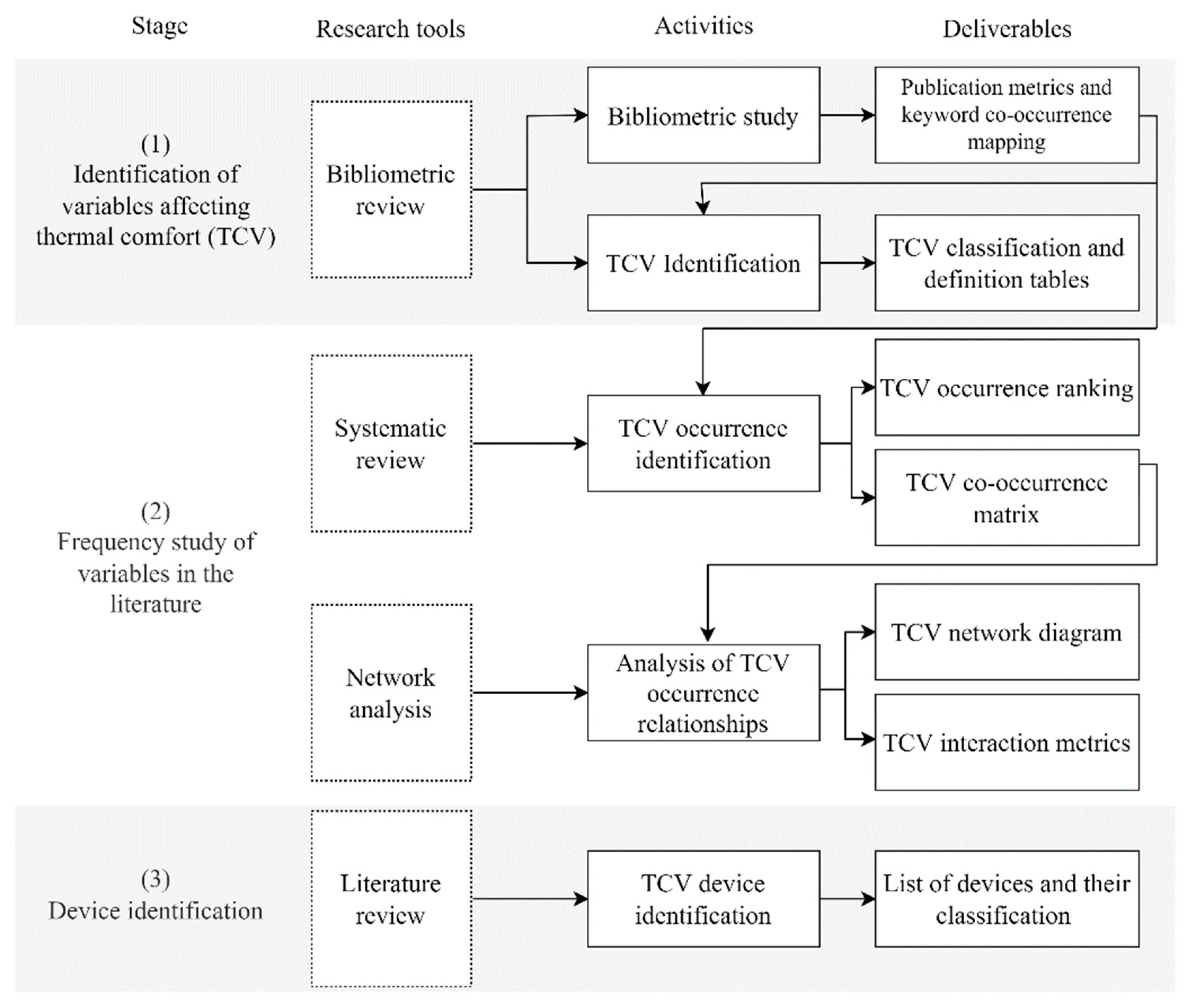
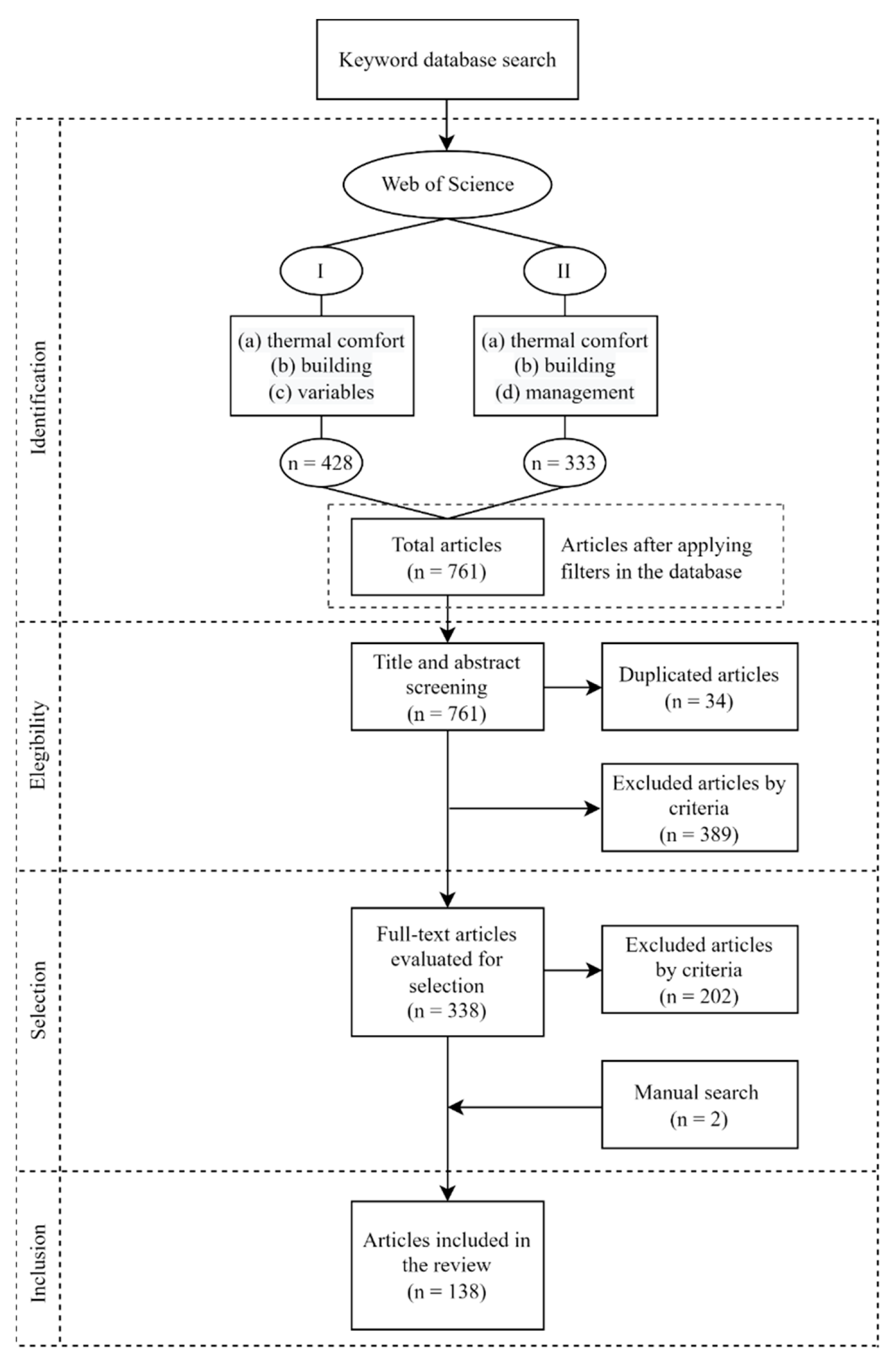
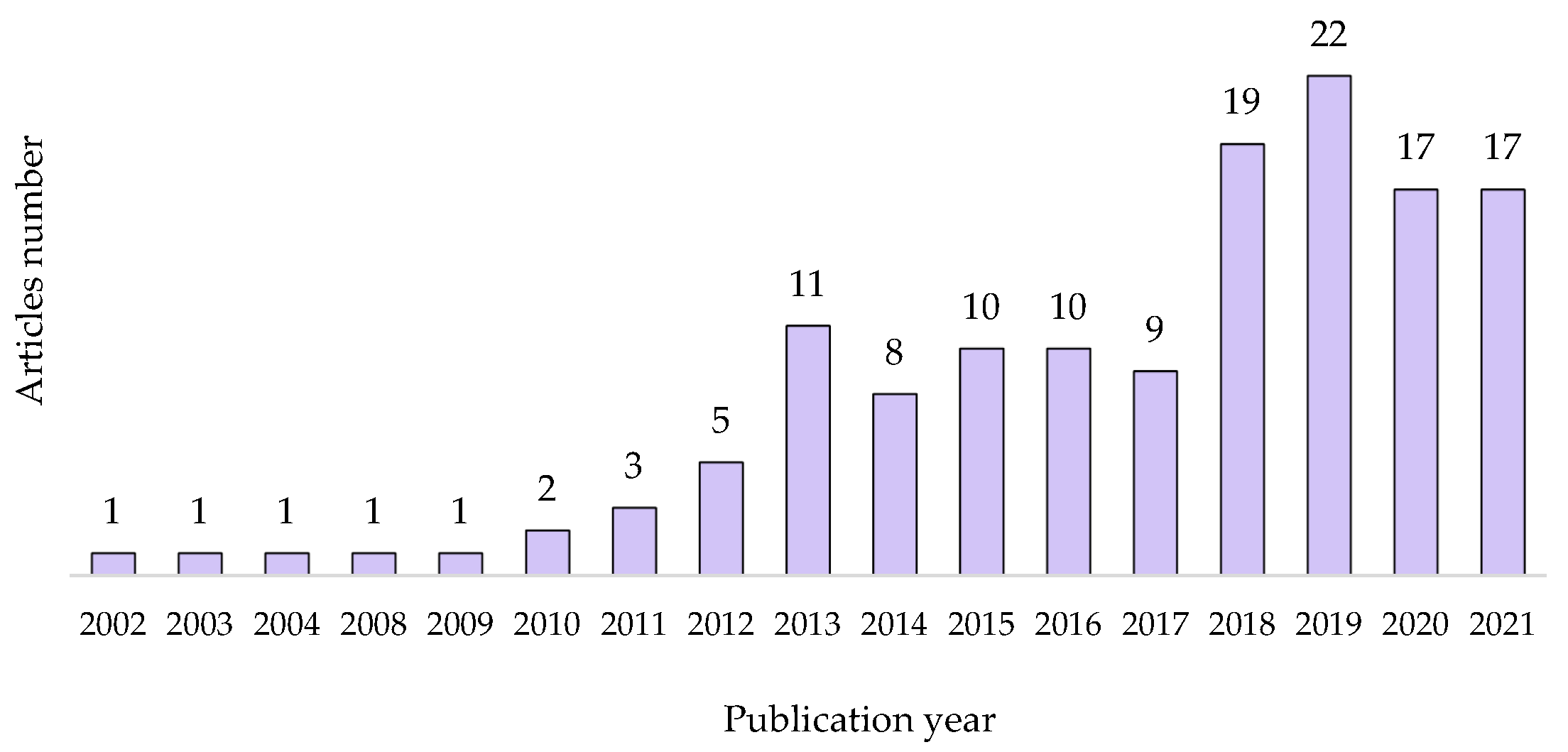
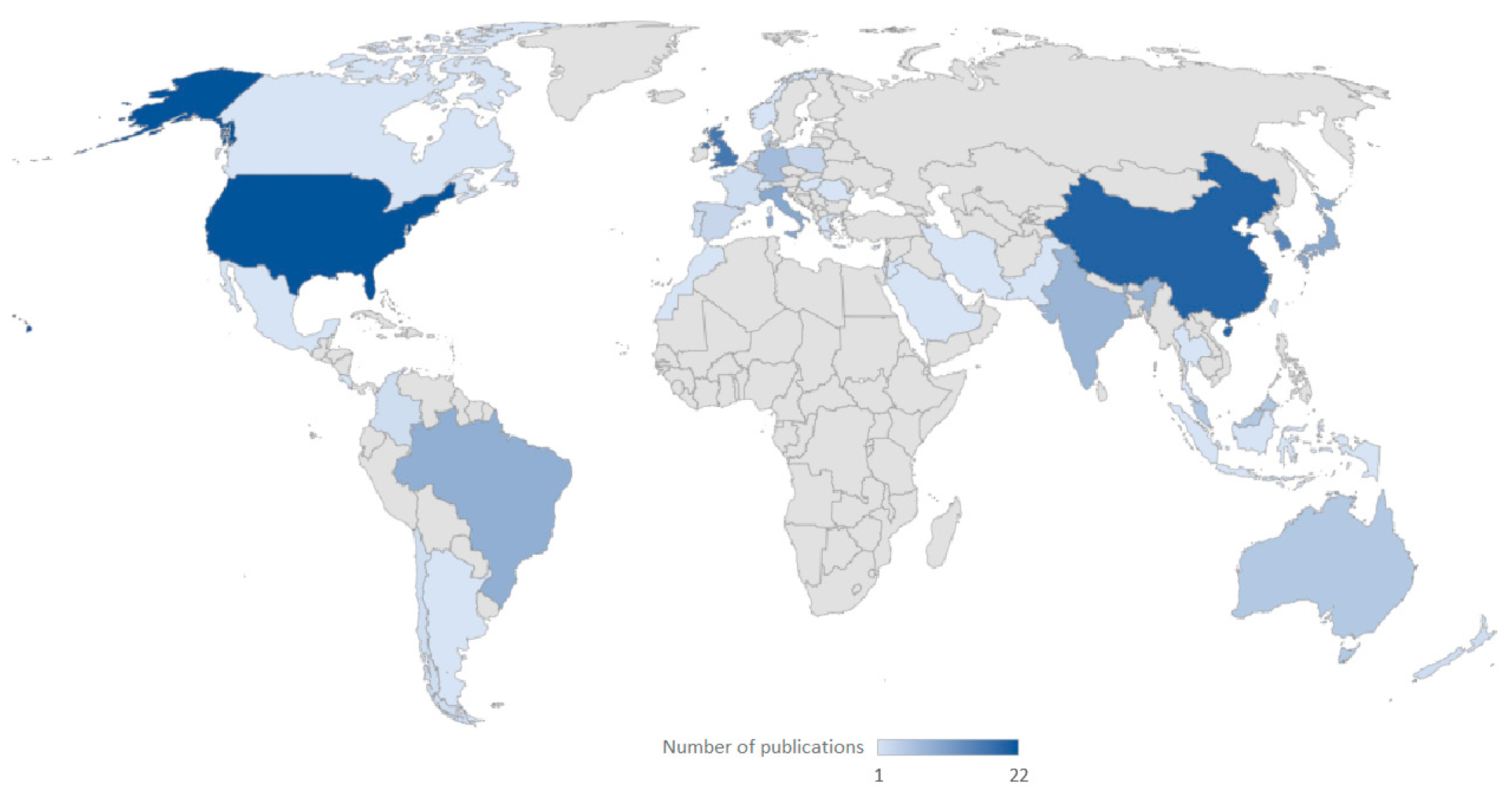

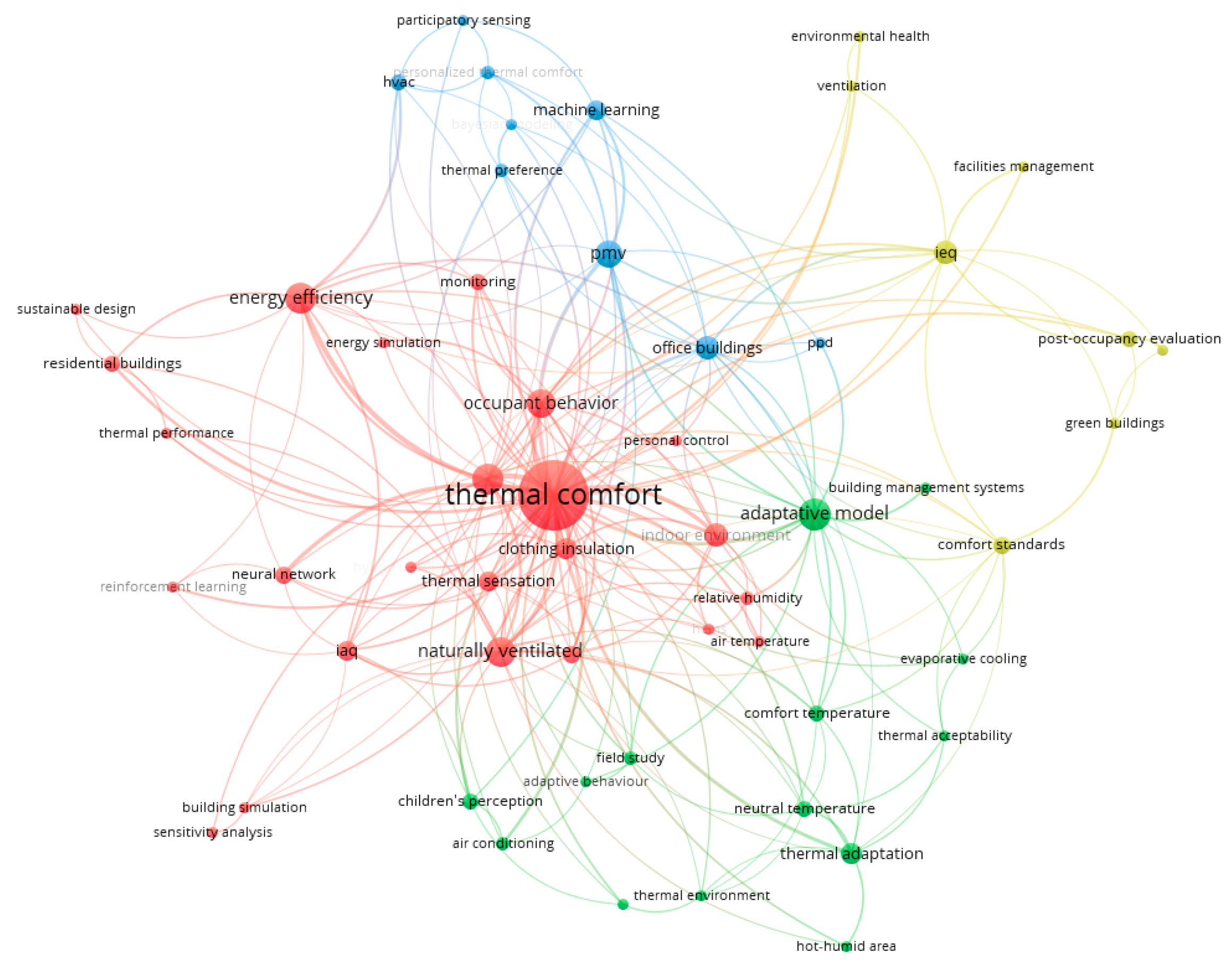


| Classification | Variable | Identifier |
|---|---|---|
| Basic identifiers | Structure type | STC |
| Season | SN | |
| Climate | CLI | |
| Cooling strategy | CSTR | |
| Occupant’s personal information | Gender | GEN |
| Age | AGE | |
| Occupant characteristics | Metabolic rate | MET |
| Clothing insulation | CI | |
| Skin temperature | ST | |
| Window/door use | WD | |
| Building characteristics | Orientation | OR |
| Artificial air conditioning | AR | |
| Materials | MAT | |
| Natural ventilation | NV | |
| Environmental conditions | Operative temperature | OPT |
| Dry bulb temperature | DBT | |
| Air temperature | AIRT | |
| Globe temperature | GLT | |
| Mean radiant temperature | MRT | |
| Mean outdoor temperature | MOT | |
| Air velocity | AIRV | |
| Relative humidity | RH | |
| Solar radiation | SR | |
| CO2 concentration | CO2 |
| Id | Variable | Definition |
|---|---|---|
| STC | Structure type | Classroom, multi-family residence, office, others [16]. |
| SN | Season | Spring, summer, autumn, winter [16]. |
| CLI | Climate | Koppen climate classification [16]. |
| CSTR | Cooling strategy | Mechanically ventilated, naturally ventilated, mixed [16]. |
| GEN | Gender | Female, male, indefinite [16]. |
| AGE | Age | Age of participants [16]. |
| MET | Metabolic rate | Transformation rate of chemical energy into heat and mechanical work by metabolic activities within an organism [33]. |
| CI | Clothing insulation | Resistance to heat transfer provided by a set of clothing. Heat transfer from the whole body thus also includes uncovered body parts, such as the head and hands [33]. |
| ST | Skin temperature | Surface temperature in radiative equilibrium. It forms the interface between the body and the atmosphere [34]. |
| WD | Window/door use | Status of doors and windows as open or closed [16]. |
| OR | Orientation | It measures which cardinal point a building or space is oriented to the north to south (0–180°) [35]. |
| AR | Artificial air conditioning | The action and effect of air conditioning, i.e., providing an enclosed space with the conditions of temperature, relative humidity, air purity, and sometimes pressure, is necessary for people’s wellbeing or the preservation of things [36]. |
| MAT | Materials | Materials of construction of the structure. |
| NV | Natural ventilation | Process of air renewal in the premises by natural means (wind action or thermal draught), the action of which can be favored by the opening of elements of the exterior walls [36]. |
| OPT | Operative temperature | The uniform temperature of an imaginary black enclosure in which a person would exchange the same amount of heat by radiation and convection as in the real non-uniform environment [37,38]. |
| DBT | Dry bulb temperature | The temperature recorded by the standard thermostat with a non-wetted bulb protected from radiant exchange [35]. |
| AIRT | Air temperature | The temperature of the air surrounding the occupant [33]. |
| GLT | Globe temperature | The temperature obtained with a globe thermometer measured radiant heat [35]. |
| MRT | Mean radiant temperature | The uniform temperature of an imaginary enclosure in which the radiant heat transfer of the human body is equal to the radiant heat transfer in the real non-uniform enclosure [36]. |
| MOT | Mean outdoor temperature | Mean monthly outdoor temperature at the time of the field study [16]. |
| AIRV | Air velocity | The velocity of air movement at a point, regardless of direction [33]. |
| RH | Relative humidity | Water vapor concentration at the existing temperature [2]. |
| SR | Solar radiation | The energy emitted by the sun, which propagates in the form of electromagnetic waves. [39]. |
| CO2 | CO2 concentration | CO2 level measured in the air. |
| Measurement Approach | Tool | Measured Variable |
|---|---|---|
| Occupant-Centered Variables | Questionnaire and survey | Thermal sensation (TSV) |
| Thermal preference (TP) | ||
| Thermal acceptability (TA) | ||
| Age, gender, clothing | ||
| Skin temperature sensor | Skin temperature | |
| Door and window open sensor | Window/door use | |
| Environmental Conditions | CO2 sensor | CO2 concentration |
| Air Temperature sensor Thermo-hygrometric sensor | Air temperature | |
| Globe thermometer Heat stress meter | Globe temperature | |
| Humidity sensor Thermo hygrometric sensor | Relative humidity | |
| Air velocity sensor Anemometer | Air velocity | |
| Pyranometer | Solar radiation | |
| Thermal camera | Surface temperature |
Publisher’s Note: MDPI stays neutral with regard to jurisdictional claims in published maps and institutional affiliations. |
© 2022 by the authors. Licensee MDPI, Basel, Switzerland. This article is an open access article distributed under the terms and conditions of the Creative Commons Attribution (CC BY) license (https://creativecommons.org/licenses/by/4.0/).
Share and Cite
Mamani, T.; Herrera, R.F.; Muñoz-La Rivera, F.; Atencio, E. Variables That Affect Thermal Comfort and Its Measuring Instruments: A Systematic Review. Sustainability 2022, 14, 1773. https://doi.org/10.3390/su14031773
Mamani T, Herrera RF, Muñoz-La Rivera F, Atencio E. Variables That Affect Thermal Comfort and Its Measuring Instruments: A Systematic Review. Sustainability. 2022; 14(3):1773. https://doi.org/10.3390/su14031773
Chicago/Turabian StyleMamani, Tamara, Rodrigo F. Herrera, Felipe Muñoz-La Rivera, and Edison Atencio. 2022. "Variables That Affect Thermal Comfort and Its Measuring Instruments: A Systematic Review" Sustainability 14, no. 3: 1773. https://doi.org/10.3390/su14031773
APA StyleMamani, T., Herrera, R. F., Muñoz-La Rivera, F., & Atencio, E. (2022). Variables That Affect Thermal Comfort and Its Measuring Instruments: A Systematic Review. Sustainability, 14(3), 1773. https://doi.org/10.3390/su14031773









